Devon Trevarrow Flaherty's Blog, page 3
April 10, 2025
Writer in the Wild: Mobile Bookshop
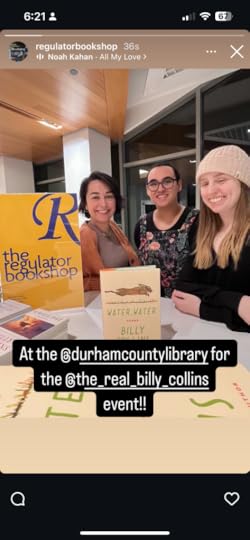
I work in a bookshop now. (They call that a bookseller.) I told you before but there’s no telling where you’ve joined this blog or how often you read it. I freaking love my job. Not only do I get to touch and smell and hug books while on the job, but it happens to be a chill job where no one is going to put me on a leaderboard (Instacart) or yell at me (car dealership). And I know what I’m doing. I can recommend a book to a customer hard core. I can figure out which cookbooks are hot right now. I can straighten a messy pile like that!
We don’t actually do events at the bookstore, not since the Pandemic and since giving up half the space (the downstairs) to an IT business. (The bookshop has been there almost 50 years.) But sometimes we sell books at events elsewhere. Almost immediately after being hired, I asked to go to one of these events so that I could learn how to work them. Also, it was Billy Collins and I like Billy Collins (poet laureate and accessible poet). While working outside of the shop is more uncomfortable for me, for sure, I also like the idea of doing something different and something challenging (which are two ADHD motivators. And in fact, at the store, that’s another thing I like about it. I don’t do the same thing all the time).

I may not have gotten to hear Billy Collins read or speak because he was in the next room and I was manning the book table. I got his autograph afterward (for both me and my aunt, who is a fan). I got to know two of my co-workers much better and also how to set up and run the Square, etc. I am happy in almost any corner of the book world, and a book table in a library at an author event is securely in the book world. (I have since also worked an event at a Black horticulture conference, which was perhaps less bookish, but let me tell you the people that were there were gaga for the particular gardening books we brought and some walked away with armloads of books).
That’s all. Just a job update and a this is us. We are the people who man the book table at your event. We love books. We want you to love them, too.
Picture Book Review: Hot Dog

I have been reading at least one picture book per month, this year. I love picture books. I sometimes feel like that’s cheating, to read a children’s book, but there is no cheating. I am making this up. I read Doug Salati’s Hot Dog because it won the Caldecott and Ezra Jack Keats awards a couple years ago. I was glad I did. What a warm, pleasant, adorable escape from reality for a few minutes. Besides loving the illustrations, characters, and story, my only “complaint” is that it doesn’t actually need the free verse poem of a text. I think wordless here is better.
It’s a hot, noisy day in the city and while on errands with his person, this little dog has had enough. What he needs is someone to notice that a breezy day on a deserted beach is so much better than all of this nonsense.
I am tempted to call this a graphic novel for kids except that it’s not long enough. There are multiple panels on some pages, and you follow along just as you would in a graphic novel. And as I said earlier, I don’t think the words—except for the onomatopoeia—are necessary at all. Perhaps that would have been a tough sell for Salati to publishers, but that means that kids who don’t yet read can thoroughly enjoy Hot Dog without even needing someone to read it to them. The illustrations make the story abundantly clear without words, which is great.


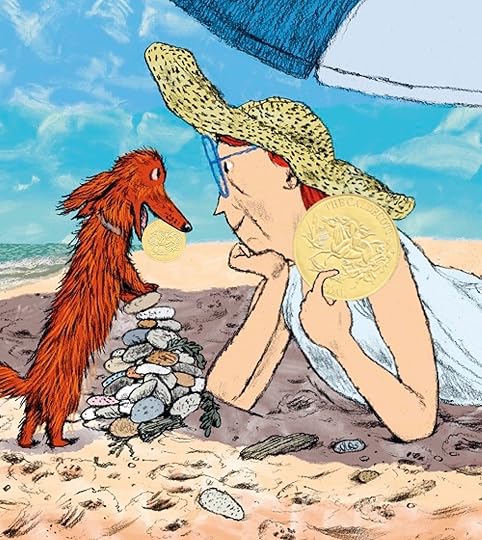
Speaking of, the illustrations are vibrant and cartoony and stylized, but somehow extremely immersive. You feel all the things while turning the pages, including emotions but also all the sounds, sights, smells, touch. And personally, I appreciated that the main human character in the story is an average-looking woman advanced in age.
I loved this book. I loved the art. I loved the gentle story somehow bursting with personality, meaning, and joy. I would enjoy it with a kid without reading the words. It’s the illustrations and the story told in pictures that won it its awards, and that’s what shines here. As well as our sassy little hot dog.
Writer in the Wild: Fellowship in Fancytown
It’s silly that I am only blogging about this now. But let’s assume that you are interested in hearing about a fellowship experience at a writing (craft) conference; you don’t care how long ago I actually did the thing. For what it’s worth, it is now April 2025. I went to Martha’s Vineyard in June 2024. Yikes.

I had some history with Martha’s Vineyard Institute of Creative Writing. I received a Parent-Writer Fellowship in 2020 which imploded due to the Pandemic. However, they went ahead with a virtual version and encouraged us to be somewhere isolated but not at home. Some generous relatives donated their condo in Delray Beach. (You can read about that experience HERE.) Then MVICW shut everything down for a couple years as the Pandemic drew out (for-ever!). When they brought it back, for 2024, I was on my last year of being able to apply for the Parent-Writer Fellowship (since my kid was turning 16). I didn’t actually get that fellowship, but I did get another (general) one and decided to invest the rest in this amazing experience I was going to have in (on, it’s an island) actual Martha’s Vineyard.
Saturday. Flight from RDU to NYC. (I was planning to drive, but the cost and inconsistent schedule of the ferry to the island made that nonsensical.) Arrived with more than two hours to spare, partly because my husband was between work and sleep, and I needed a driver. TSA took my toothpaste. At the airport in Raleigh I bought a bev and settled in for the wait, nervous about my connecting flight (too close together!) and my carryon luggage (so expensive!), wanting to make it on to the island today (after five-plus flight changes in the past week and my zone being a seven). On the flight I actually set my Birdie alarm (read: stupid loud) off crawling over a nursing woman. I was hot. I was stressed. And apparently I was a nuisance to others.
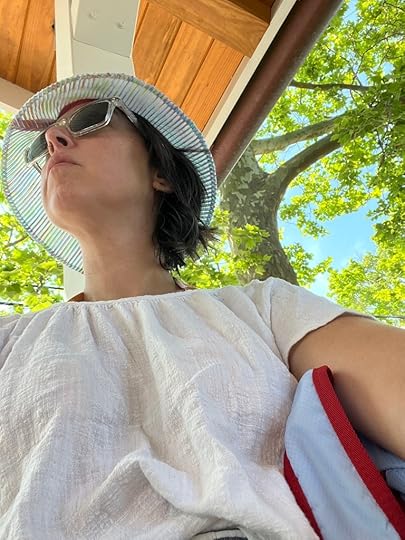
But I made it. The Martha’s Vineyard airport is even smaller than I expected; we de-boarded on a rolling staircase and our luggage was handed to us through a window to the outside. I waited on a rocking chair for my $50-plus Uber. I should have made more of an effort to ride-share. But I made it to the Airbnb where I was the first of six to arrive. Via the chat group that we had set up, I found out I would be the only one until late that night, when only one more person would arrive. I chose a bed and unpacked. I walked twenty minutes to the Stop & Shop for groceries, water, and a new phone cord since mine suddenly no longer worked. There are very limited resources on the small island. I passed the Vineyard Arts Project—where the conference itself was going to take place—and had to buy a weird, last cord for $20 because I’m at the end of the world with the rich people. (Most expensive real estate in the country, or something like that.) It was hot.
I ordered pizza in from Vineyard Pizza (veggie) and planned out the week the best I could. New friend arrived and he headed to the James Joyce Festival while I sat alone in the house and read. What else?
Sunday. I woke up on schedule and found my way to Edgartown’s main bus stop on Center Street, waited and read (again). I took the bus to Oak Bluffs, the tourist center of the island, to spend one of my only free moments actually vacationing. Ferries go in and out all day from the bustling streets and regional architecture, the various Jaws photos opportunities. I was early for my orienting tour, so I wandered the shops to get some matcha-berry drink (which was amazing) and shove a bagel in my bag for later. In case.
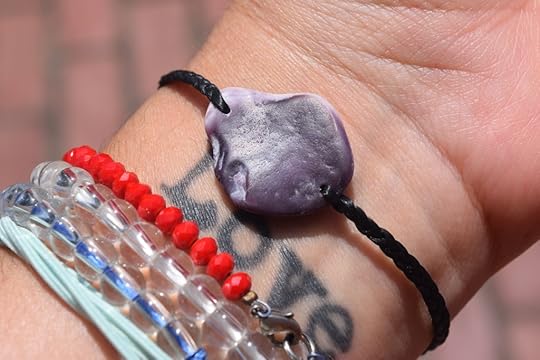
My orienting tour—which I had booked ahead on the internet—was a three-hour van tour with like six other people and a local (born and raised) tour guide. (This turned out to be a great idea. I was more aware of the island than most of the other conferees.) I was disappointed, though, that the tour didn’t actually stop anywhere to explore or experience. But I learned a lot of things as I was whipped around, seeing the lay of the land unfold out my window, learning the complex, concentrated history of everything from sheep to Indigenous people to Jackie Onassis Kennedy. I’d love to visit each of the towns, but I won’t have time for that.
Not in a hurry to return to Edgartown, I wandered Oak Bluffs, looking for some iron church that I never found, but instead found a cabin community that looked like gingerbread houses. I walked out onto the pier, thinking I might eat there and up to an outdoor bar in a crowded restaurant. I ordered a plate of shrimp and a water (to offset the cost of the shrimp). I ran into someone who recognized me from the airport (!). This is indeed a small place.


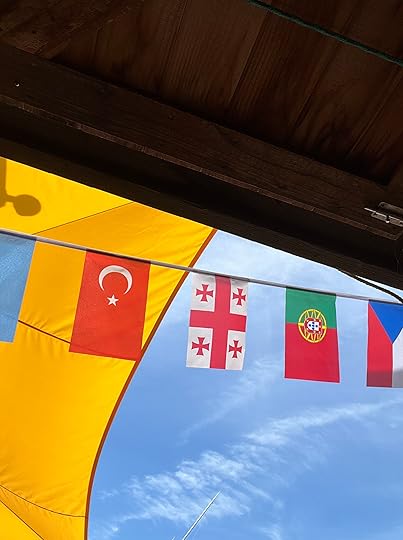

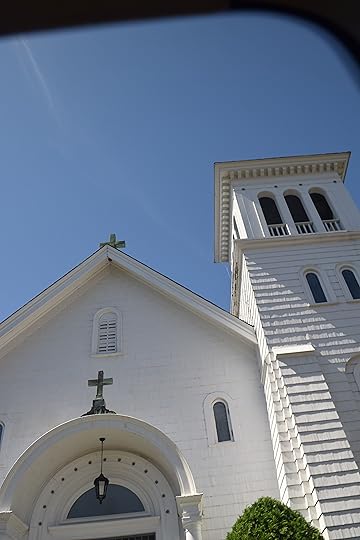
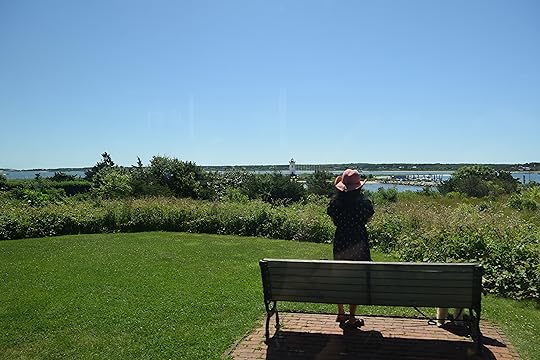
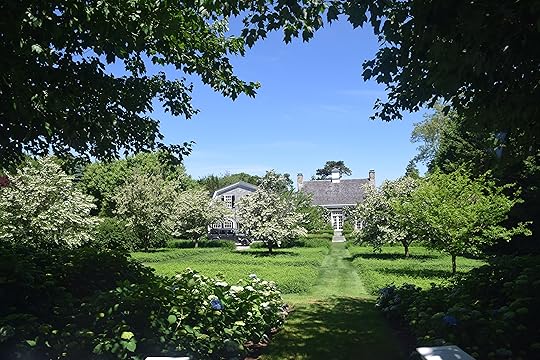
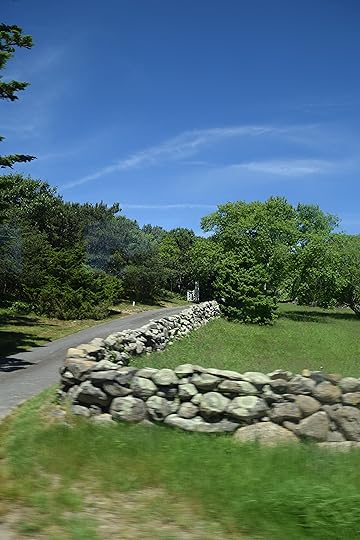
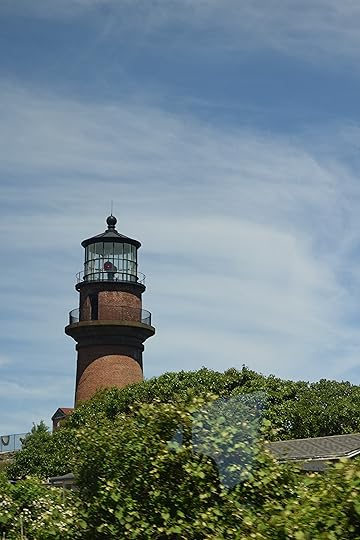
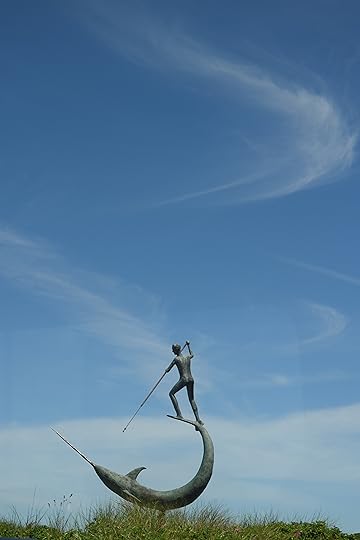




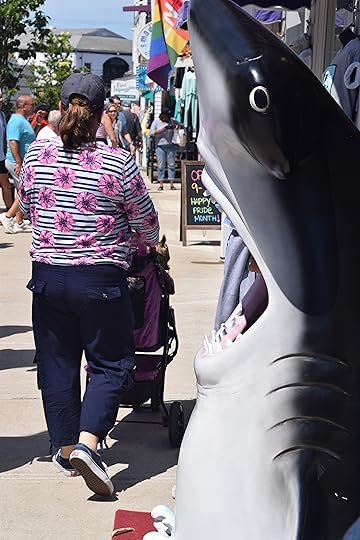


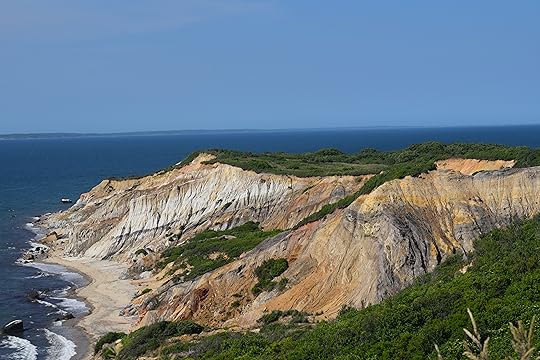
I returned to the Airbnb to meet the remaining four housemates, including my roommate from Nevada. They did a great job pairing us up and I’m grateful. I put on a polka dot dress to walk to the Opening Ceremonies, where I already wanted to cling to my housemates but forced myself to chat with Alexander Weinstein and his mom and some other people I have since lost track of. I was exhausted and out of place. But I am here. And I was invited with my housemates and one other person to get seafood on the water for a late dinner, through Edgartown and to the Seafood Shanty. (Things are called shanties and shacks here, but this is facetious, cheeky.) I might have ordered fish and chips. I tried to hold my money close to me, but I am in Rome and I am a temporary Roman. The heat turns violently to cold, a thing that will only happen once or twice during an otherwise hot week, though after this night I kept needlessly carrying sweaters, jackets and scarves with me, thinking I was being smart.
At the house, I read Nettle & Bone until we began a house screening of Jaws. I closed my eyes for jump scares. The tension of that movie holds up after all these years. It was a great way to bond with my housemates and an appropriate beginning to a MVICW conference.
 Me chatting with Christopher Citro after his reading. And someone catching it on film.
Me chatting with Christopher Citro after his reading. And someone catching it on film.Monday. The first full day of sessions. I spent the morning at the opening session on the writer, slacker, and inner critic with Weinstein. In the break, we housemates were drawn back to the house and lounged around on the deck, reading our poetry aloud to one another, eating small things, and smoking boutique weed (though not me, admittedly). In the afternoon, I used hypotheticals to build characters and the town of Fut with Phong Nguyen and a room of other conferees. Evening readings were given by Nguyen and Christopher Citro, both impressive writers whom I believe I’ve heard from before. Nguyen is my spirit animal, skipping merrily from genre to genre.
After all that work, we played by walking to a garden-store-slash-pizzeria for beers and more veggie pizza and where some non-housemate skipped out on her tab. I read to sleep with my new booklight (super intelligent thing to bring to a conference with a roommate).
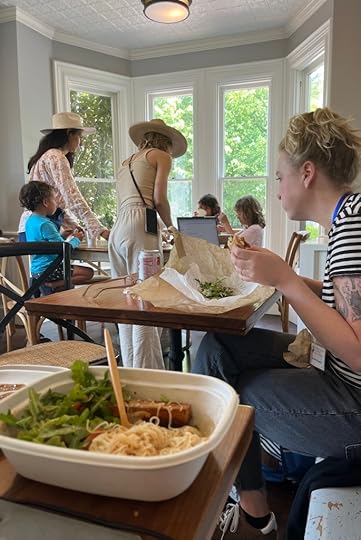
Tuesday. I attended my first session with Anthony Correale on placing the frame. My afternoon session was a sort of given, the second part of Nguyen’s Fut, but building strong “connective tissue” with plot, characters, setting and theme. I may have a book here about Justine and her cats in Fut. In between, I met my housemate at a cafe called Rosewater for lunch over laptops, munching next to one another as she grades papers, and I do writerly things. The evening readings were Correale and Su Cho.
Wednesday. This was the day “off” to explore the Island, but also to meet with whomever for your manuscript critiques. My fellowship included one of these, so I spent the morning time nervously waiting for it in a bookbinding class with Sarah Nguyen, then sat down with Weinstein for his critique of a sci-fi story I’ve been working on for a while. So much great feedback. And also encouragement. But I also wanted to use any moments free to their fullest, so I went straight from the critique back to the bus stop and boarded a bus for the Aquinnah Cliffs. I happened to sit next to one of my housemates, so we rode together up to the Cliffs and did most of our exploring together. Bought a Wampanoag “coin” bracelet and granola bars on our way through the Wampanoag shops to the Gay Head Cliffs. Then a long hike down to the beach, where I skittered along the shoreline taking photos and ruminating in the beauty. My housemate eventually left me with his other friends and I hiked in the near-dusk back up for one of the last buses, where we all rode back together, sun- and wind-swept and ready for dinner and reading (I was on Normal People, now) and bed. About dinner… I walked into Edgartown and found a sammy shop, where I sat and read and looked out on the busy streets and bustling tourists.
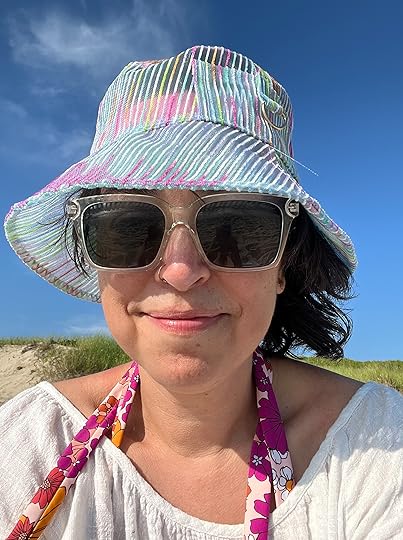

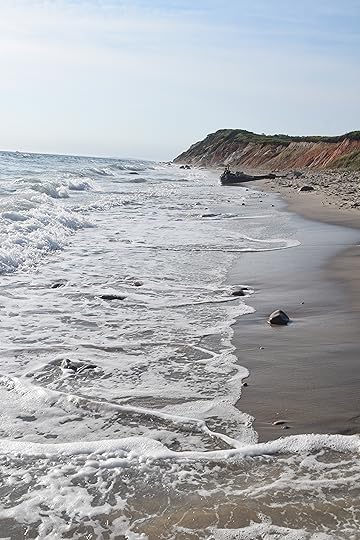
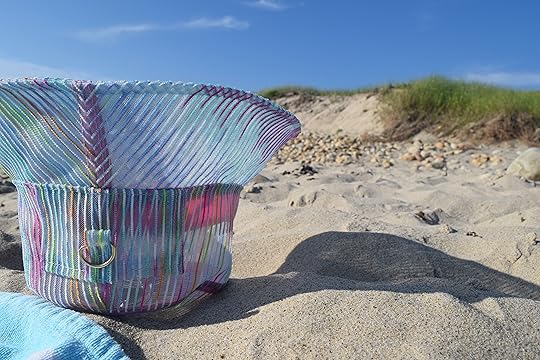


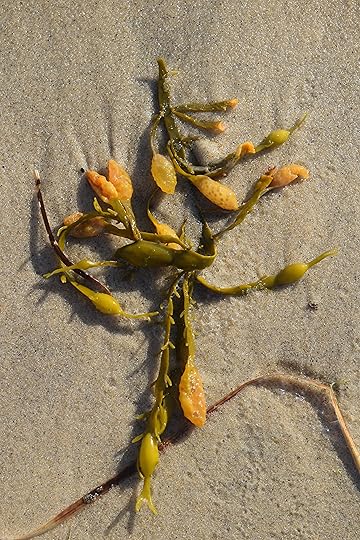
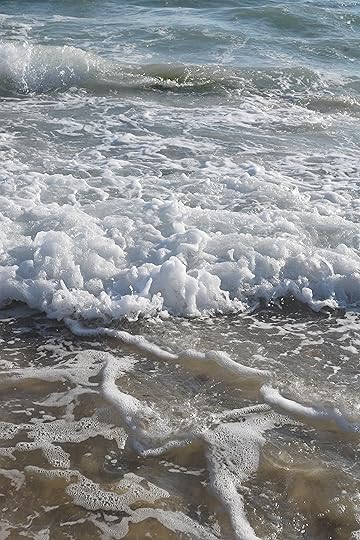
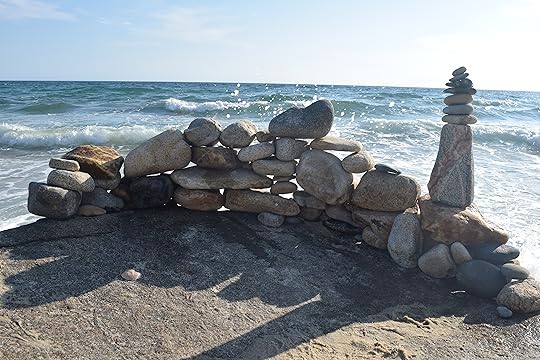
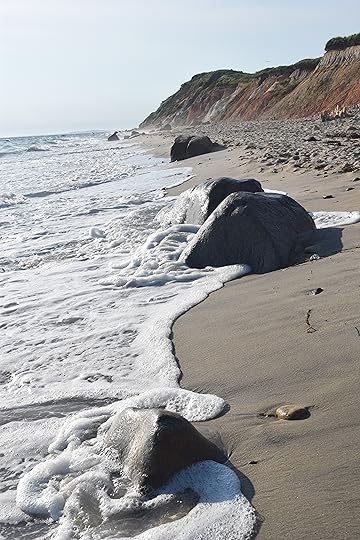

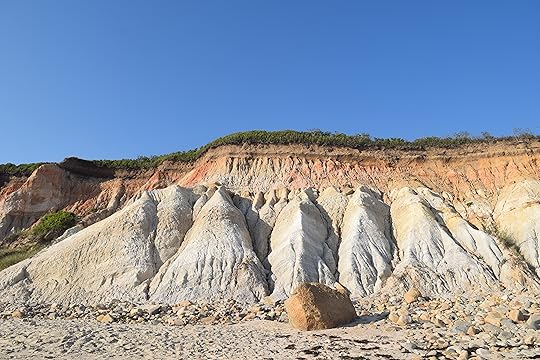





Thursday. Another full session day, beginning with a morning session on creative nonfiction with the poet, Su. Returned for lunch at Rosewater with my roommate and two other housemates. This had become our “place.” My afternoon session was fiction with Weinstein, which I followed with dinner back at the house. (I might as well eat these groceries at some point, and save a little money.) The resident readers began that night and some of my housemates read out. After that, my roommate and another housemate took me into Edgartown for karaoke. My one gin and tonic and their many drinks led to a few songs, only one from me because my second song got pushed back indefinitely by wealthy, drunk tourists’ fifty-dollar tips to the karaoke guy. Sigh. It was a raucous, carefree night from a different life that I will not soon forget.

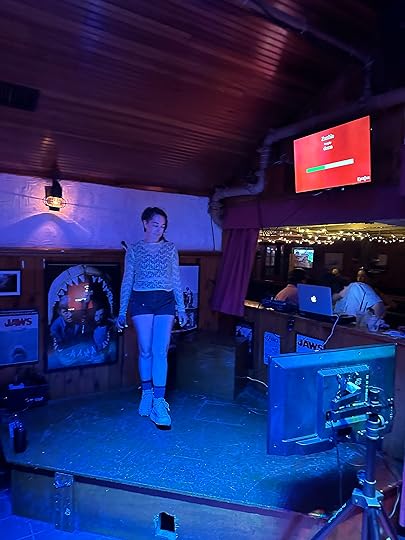
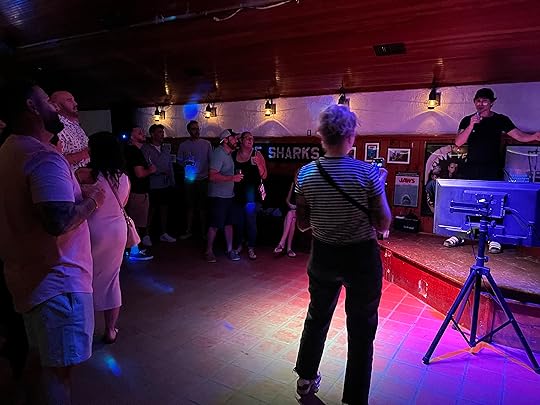

Friday. Final full day of sessions. Morning was publishing with Citro, afternoon a Writers Life panel with everyone. Lunch in between was at Rosewater. I laid low until the evening resident readings, where I read a humorous reading (with swears) from a short story I have yet to have published. It got laughs, which made me so happy. (I had learned just a couple months before that reading fast does not get you any points with the audience. Choose something that can fit comfortably in your time constraints, and you will impress more.) After all that, there was a brief closing ceremonies and I was able to take a breath and walk away after being overwhelmed with interactions all week. I walked alone through a dark Edgartown out to the lighthouse as the Strawberry Moon rose giant and red (actually) over the ocean. I grabbed an ice cream from the Scoop Shack on my walk back to the house, up some lonely, dirt road.



Saturday. Was head-home day. I shared an Uber to the airport with a new friend (read: housemate), where we arrived before our counter even opened. (It’s a small building with a few counters). When I got called in to wait for my flight, I was surprised-not-surprised that my “gate” was some benches in an open-sided tent. I waited, amused, as my housemate eventually joined me because this bench-tent-gate was the only bench-tent-gate, of course. And then I was whisked off to a bigger airport (in DC, skimming over the Mall on our descent) where I caught a bigger plane home and back to my regular programming.

Conclusion: As I have said before, this conference was not usual. It is also sometimes called a residency, but there is a limited amount of critique and networking, more creative exercise and education. The point is to awaken your muse. I found the networking bits and trying to get along with people I don’t know to be exhausting, but I would do it again, because there were also amazing things about it (and next time I’ll know what to expect). Then again, I might want to try other residencies and conferences out, too. But it will be hard to beat Martha’s Vineyard, as far as in-country experiences go. Maybe one day they’ll ask me to return as a triumphant success story, to teach instead of be taught.
Note: I did meet up with one of my housemates like a month later. I was in the same state, traveling, and drove an hour with my fam in tow to have dinner with him. I was also supposed to have coffee with one teacher, but he got sick. He lives where my husband’s family is, so maybe next time. I also occasionally get messages from my housemates suggesting competitions or asking writer questions.

April 9, 2025
Graphic Novel Review: The Sandman Vol. 1, Preludes & Nocturnes

Neil Gaiman’s Sandman comic series has long been touted in various places as one of the best comics/graphic novel series out there. I have meant to read it for a while and finally snagged the first one because I mention it in the novel I am writing. As with some of Gaiman’s other works I have read (including American Gods), it is not exactly my cup of tea even though I can appreciate the art for itself. It is dark and gritty, too much for me. But it is also an engaging story with innovative art. So far. I only read the first volume.
An occultist imprisoned the Sandman—Dream or Morpheus—for seventy years, during which the world was disturbed by sleepless nights, nightmares, and countless narcoleptics. When Dream escapes, he goes on a journey through dark, magical realms to find his missing objects and restore himself to power and health.
Preludes & Nocturnes is the first volume in the Sandman series. There are eight comics included in this volume with a stand-alone story at the end (on the character Death). Originally, the series was published as individual comics, artists changing throughout even as Gaiman continued to write. (We are not going to deal with Gaiman’s sexual assault charges here, which he denies as of March 2025. You can look that up if you are interested.)
The series, bound into volumes, is currently:
Vol. 1, Preludes & NocturnesThe Doll’s HouseDream CountrySeason of MistsA Game of YouFables & ReflectionsBrief LivesWorlds’ EndThe Kindly OnesVol. 10, The WakeThere’s also Deluxe editions and Absolute editions, as well as other volumes that are outside the ten chronological volumes (Overture, The Dream Hunters (2), Endless Nights, Book of Dreams, and Midnight Days). The original series consisted of 75 issues published between January 1989 and March 1996 (as comics). There are number of ways to read your way around and through this series and its spin-offs, just like with many other comics series/worlds/universes.
The word on the street is that the early comics (and therefore what I read) are the worst, perhaps volumes three through six being the best. You could just skip to those, if you want, especially if you don’t see yourself reading the entire thing. I probably should have done that, though I found the premise interesting and maybe envisioned going all the way through the ten basic volumes. There are Gaiman books that are not too gritty and dark for me, like The Graveyard Book and Coraline (both notably for kids).
As far as visually, I found the first volume to be dirty and imprecise, not to mention gory and twisted and disturbing, but it is horror (or modern dark fantasy). And that’s just about all I have to say about this. If you like horror and especially dark things (it reminded me of The Crow but with more sexualization), then this might still be for you because apparently it’s very impressive as both a story and as art. My deciding not to continue was only partly because of the story’s darkness; it was also because visually things are dark, busy, and “sketchy” (by which I mean crowded with fine lines). This, too, is not my cup of tea. But it may be yours. With no page numbers and no table of contents, I didn’t always know where I was going. I also didn’t always know where I was going between panels, which is partly because I don’t read that many comics but also because this is the earlier Sandman work and the artists themselves were also figuring stuff out. The gritty art style often pulled me out of the page.
The Sandman is a celebrated comic series with lots of fans and awards to back it up. I found it too dark and gritty and the art both impressive and difficult to follow. But I only read volume one, and the series is said to improve later on, though ratings remain consistently high throughout. Not my thing. Many people’s thing. I can appreciate it some. I won’t be continuing.


There are at least two Sandman TV series, one running from 1989-1996 and one from 2022 until currently (2025). The recent one has pretty great reviews, as do several of his recent adaptations like Good Omens and American Gods. I think I’ll wait to approach these because I imagine they are too much for me even though they might be impressive (or are impressive) in this medium. Knock yourself out.
April 8, 2025
What to Read in April 2025

I am on hiatus. Which is why I am making book recommendations for April a week into April. I will give you this much (and a few other blogs) and then disappear again for another week or so. Life.
April is Easter, at least this year. (What’s with the lunar date thing?) I have yet to read a great Easter-y book to recommend for you, though I started Ben Hur like two years ago. Haven’t gotten past the first quarter and won’t this year, either.
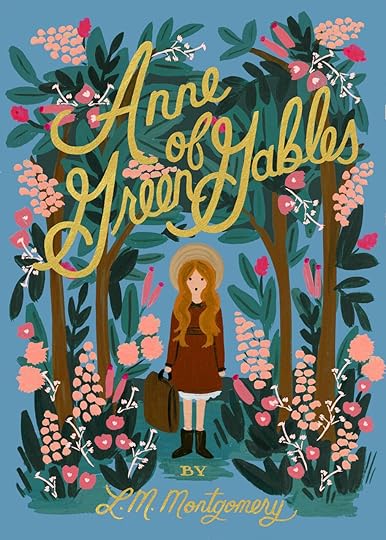

But I do love to re-read Anne of Green Gables (and the series) in the springtime. I just feel it and then it happens. However, this year I am going to scootch on over to one of L. M. Montgomery’s other books and we’re starting with Emily of New Moon, the first book in the Emily series. I have read it a couple times and love it, but am usually distracted back to Anne. I have not reviewed it here, so that’s just a little part of the reason why I’m headed there this spring instead of Anne.
April is also poetry month. I have a few books of poetry (and single poems) that I have reviewed and can recommend:

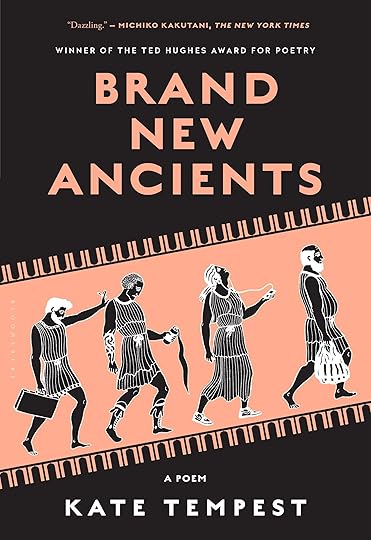



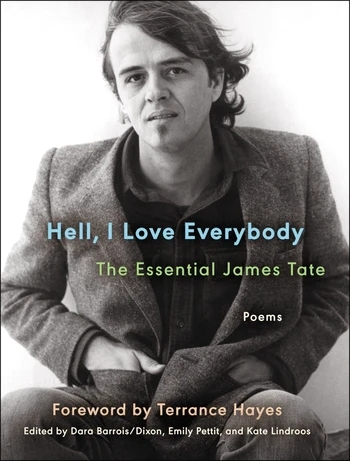 “The Jabberwocky,” from Through the Looking Glass, Lewis Caroll (with commentary, as well)
How to Eat a Poem
, The American Poetry & Literacy Project
Brand New Ancients
, Kae Tempest
Asphodel & Other Love Poems
, William Carlos Williams
Glass, Irony and God
, Ann Carson“Aedh Wishes for the Cloths of Heaven,” William Butler Yeats“Kingdom Animalia,” Aracelis Girmay“A Song in the Front Yard,” Gwendolyn Brooks“The Afterlife,” Billy Collins“Falling,” James Dickey“The Long Boat,” Stanley Kunitz
Spinning the Vast Fantastic
, Britton Shurley
Hell, I Love Everybody
, James Tate
“The Jabberwocky,” from Through the Looking Glass, Lewis Caroll (with commentary, as well)
How to Eat a Poem
, The American Poetry & Literacy Project
Brand New Ancients
, Kae Tempest
Asphodel & Other Love Poems
, William Carlos Williams
Glass, Irony and God
, Ann Carson“Aedh Wishes for the Cloths of Heaven,” William Butler Yeats“Kingdom Animalia,” Aracelis Girmay“A Song in the Front Yard,” Gwendolyn Brooks“The Afterlife,” Billy Collins“Falling,” James Dickey“The Long Boat,” Stanley Kunitz
Spinning the Vast Fantastic
, Britton Shurley
Hell, I Love Everybody
, James Tate

So back to Easter and Poetry Month.
I helped set up the poetry display for the bookshop. Here are the books that I pulled from the shelves:


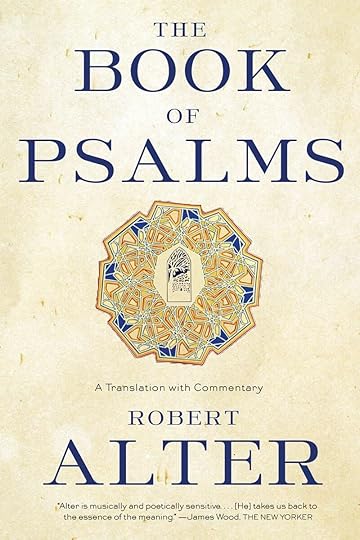






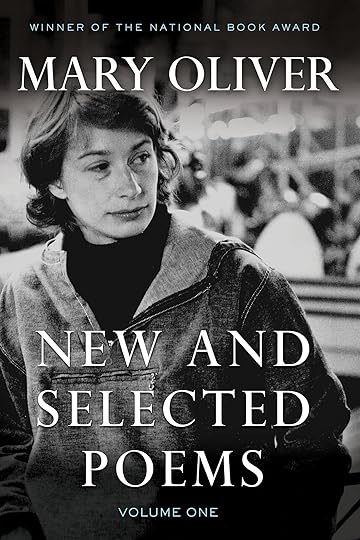

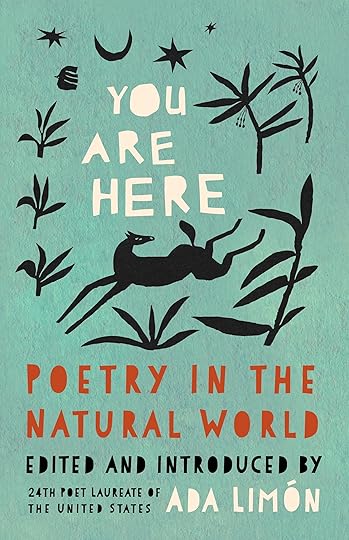
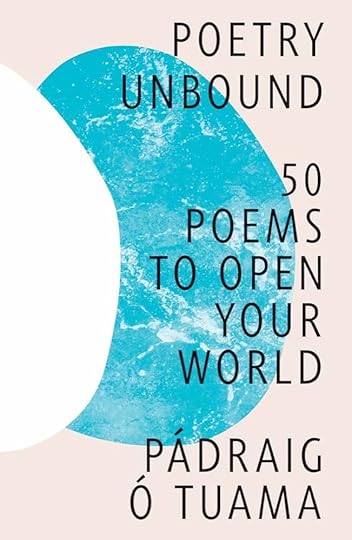
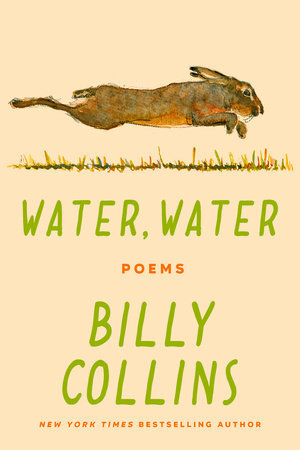
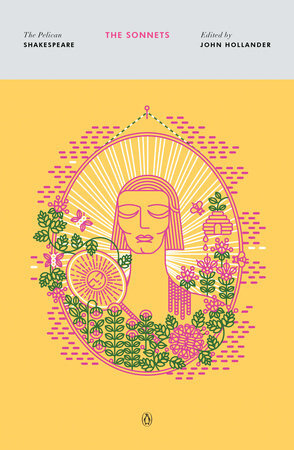

 Call Us What We Carry, Amanda GormanThe Divine Comedy (Michael Palma trans.), Dante AlighieriThe Book of Psalms, Robert AlterA Light in the Attic, Shel SilversteinFor There Is Always Light (journal), Amanda GormanThe Anthology of Black Mountain College PoetryLetters to a Young Poet, Rainer Maria RilkeIf Not, Winter, Anne CarsonYou Are Here: Poetry in the Natural World, Ada Limon ed.The Odyssey (Emily Wilson transl.), HomerKitchen Hymns, Padraig O TuamaNew and Selected Poems, Mary OliverNo One Is on the Line, Mohsen MohamedPoetry Unbound: 50 Poems to Open Your World, Padraig O Tuama ed.Water, Water, Billy CollinsThe Sonnets, William ShakespeareModern Poetry, Dianne SeussA Century of Poetry in the New Yorker
Call Us What We Carry, Amanda GormanThe Divine Comedy (Michael Palma trans.), Dante AlighieriThe Book of Psalms, Robert AlterA Light in the Attic, Shel SilversteinFor There Is Always Light (journal), Amanda GormanThe Anthology of Black Mountain College PoetryLetters to a Young Poet, Rainer Maria RilkeIf Not, Winter, Anne CarsonYou Are Here: Poetry in the Natural World, Ada Limon ed.The Odyssey (Emily Wilson transl.), HomerKitchen Hymns, Padraig O TuamaNew and Selected Poems, Mary OliverNo One Is on the Line, Mohsen MohamedPoetry Unbound: 50 Poems to Open Your World, Padraig O Tuama ed.Water, Water, Billy CollinsThe Sonnets, William ShakespeareModern Poetry, Dianne SeussA Century of Poetry in the New YorkerA few books of poetry I am looking forward to reading sometime:
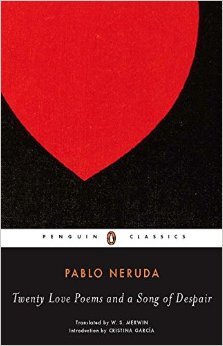




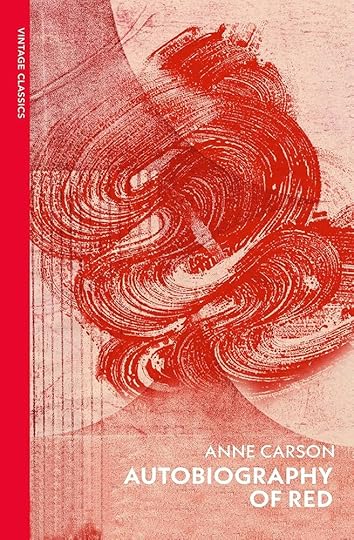
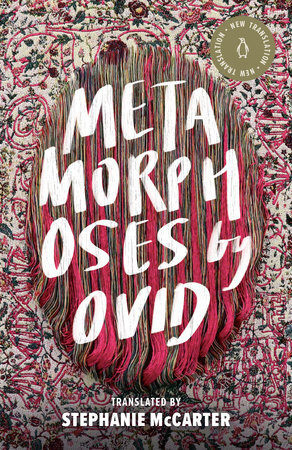
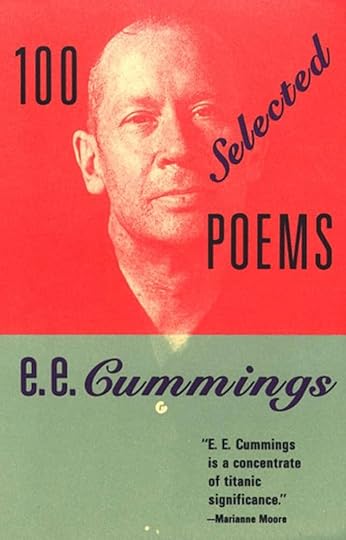
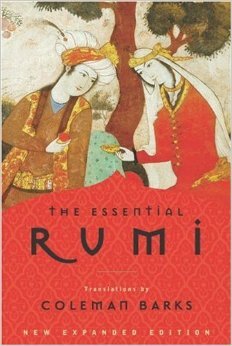

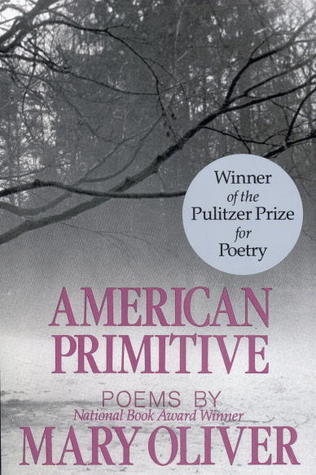

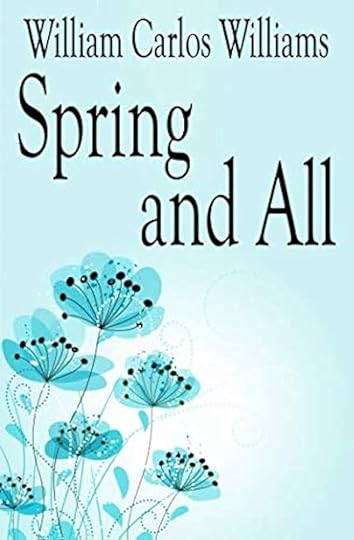
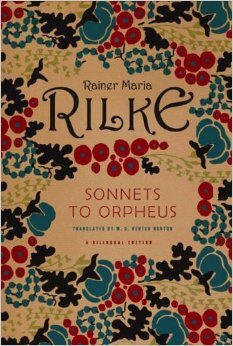

 Twenty Love Poems and a Song of Despair, Pablo NerudaThe Complete Poems, Emily DickinsonHowl and Other Poems, Allen GinsbergMountain Interval, Robert FrostLeaves of Grass, Walt WhitmanAutobiography of Red, Anne CarsonMetamorphoses, Ovid100 Selected Poems, E.E. CummingsThe Essential Rumi, RumiAnnie Allen, Gwendolyn BrooksAmerican Primitive, Mary OliverThe Collected Poems of Langston Hughes, Langston HughesSpring and All, William Carlos WilliamsSonnets to Orpheus, Rainer Maria RilkeCollected Poems, Wallace StephensJust Give Me a Cool Drink of Water ‘Fore I Diiie, Maya Angelou
Twenty Love Poems and a Song of Despair, Pablo NerudaThe Complete Poems, Emily DickinsonHowl and Other Poems, Allen GinsbergMountain Interval, Robert FrostLeaves of Grass, Walt WhitmanAutobiography of Red, Anne CarsonMetamorphoses, Ovid100 Selected Poems, E.E. CummingsThe Essential Rumi, RumiAnnie Allen, Gwendolyn BrooksAmerican Primitive, Mary OliverThe Collected Poems of Langston Hughes, Langston HughesSpring and All, William Carlos WilliamsSonnets to Orpheus, Rainer Maria RilkeCollected Poems, Wallace StephensJust Give Me a Cool Drink of Water ‘Fore I Diiie, Maya AngelouAs for some Easter reads that could work. (Easter books are about as common as Thanksgiving songs):
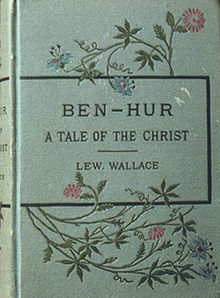
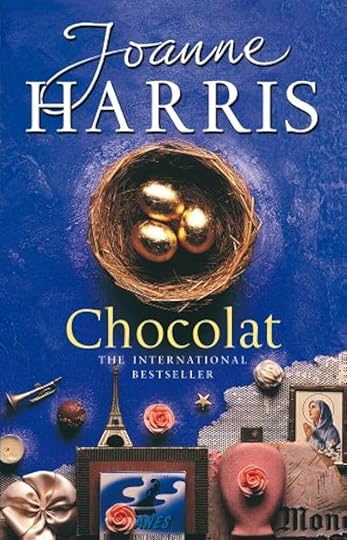
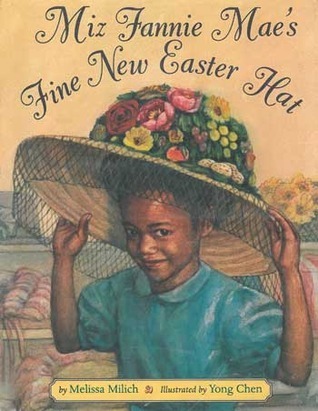 Ben-Hur, Lew WallaceChocolat, Joanne HarrisMiz Fannie Mae’s Fine New Easter Hat, Melissia Milich
Ben-Hur, Lew WallaceChocolat, Joanne HarrisMiz Fannie Mae’s Fine New Easter Hat, Melissia MilichSome of the most anticipated publications for April 2025 needs to begin with Emily Henry’s 2025 summer read, Great Big Beautiful Life. It comes out on April 15th and there will be midnight release parties so you could look into that if you are a big fan (and there are many of you). If you want a copy right away, I would suggest pre-ordering a copy ASAP, which you can probably do through your local bookstore just as easily as elsewhere.

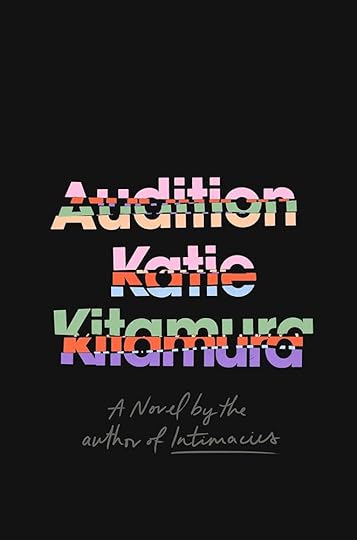
For one reason or another, I am also really looking forward to Audition by Katie Kitamura.
Other new publications this month:
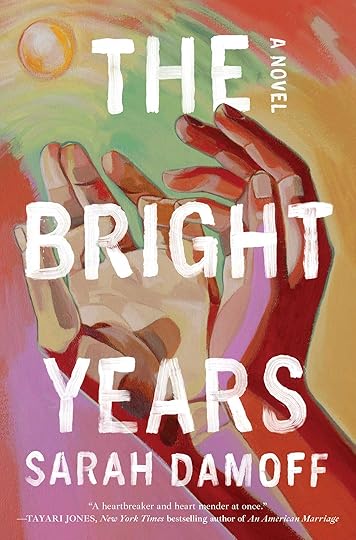

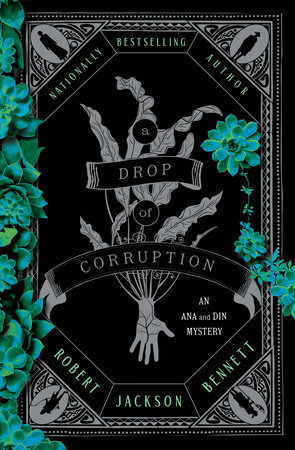






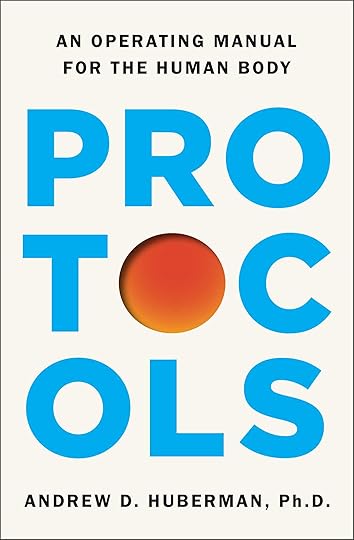
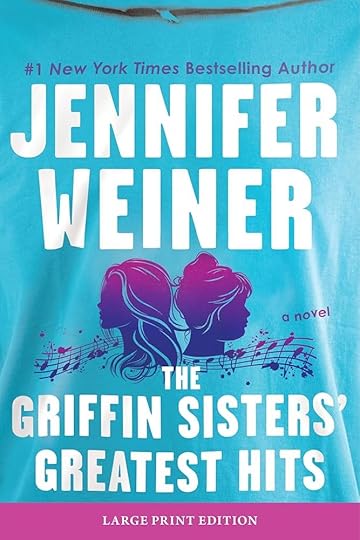
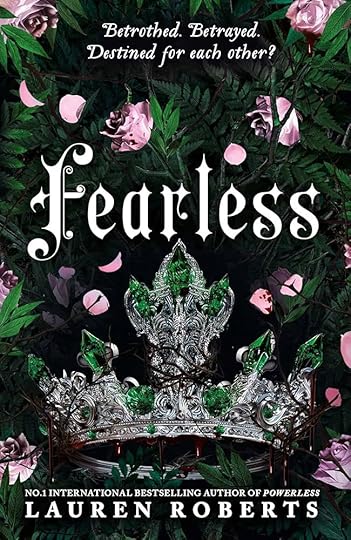


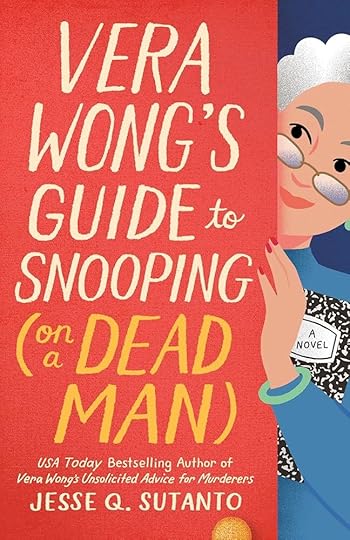


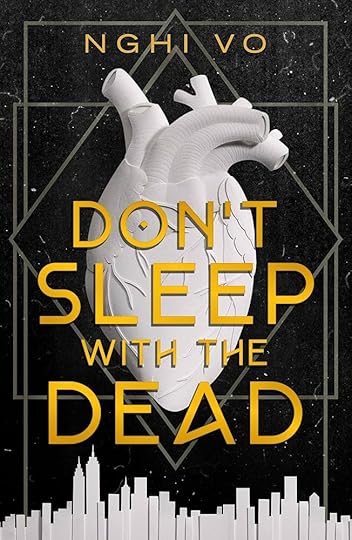
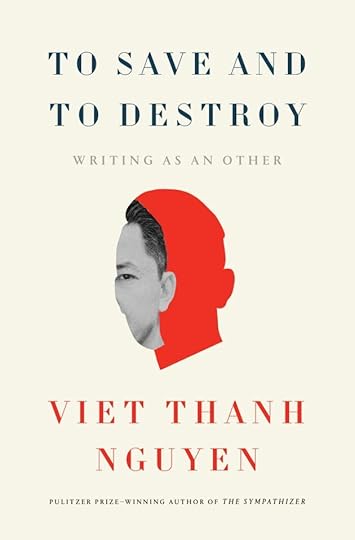
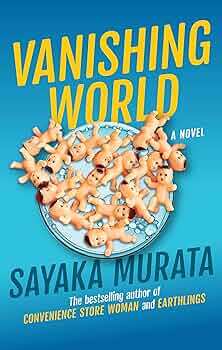
 The Bright Years, Sarah DamoffHeartwood, Amity GuigeA Drop of Corruption, Robert Jackson BennettBat Eater and Other Names for Cora Zeng, Kylie Lee BakerSay You’ll Remember Me, Abby JimenezFlirting Lessons, Jasmine GuilloryMy Best Friend’s Honeymoon, Meryl WilsnerWhere Shadows Meet, Patrice CaldwellWatch Me, Tahereh MafiProtocols, Andrew D. HubermanFearless (Powerless Triology #3), Lauren RobertsThe Griffin Sisters’ Greatest Hits, Jennifer WeinerThe Geographer’s Map to Romance (Love’s Academic #2), India Holton (which I should have a review for shortly)No More Tears: The Dark Secrets of Johnson & Johnson, Gardiner HarrisVera Wong’s Guide to Snooping (Vera Wong #2), Jesse Q. SutantoHow to Seal Your Own Fate (Castle Knoll Files #2), Kristen PerrinGifted & Talented, Olivie BlakeDon’t Sleep with the Dead, Nghi VoTo Save and Destroy, Viet Thanh NguyenVanishing World, Sayaka MurataThe Pretender, Jo Harkin
The Bright Years, Sarah DamoffHeartwood, Amity GuigeA Drop of Corruption, Robert Jackson BennettBat Eater and Other Names for Cora Zeng, Kylie Lee BakerSay You’ll Remember Me, Abby JimenezFlirting Lessons, Jasmine GuilloryMy Best Friend’s Honeymoon, Meryl WilsnerWhere Shadows Meet, Patrice CaldwellWatch Me, Tahereh MafiProtocols, Andrew D. HubermanFearless (Powerless Triology #3), Lauren RobertsThe Griffin Sisters’ Greatest Hits, Jennifer WeinerThe Geographer’s Map to Romance (Love’s Academic #2), India Holton (which I should have a review for shortly)No More Tears: The Dark Secrets of Johnson & Johnson, Gardiner HarrisVera Wong’s Guide to Snooping (Vera Wong #2), Jesse Q. SutantoHow to Seal Your Own Fate (Castle Knoll Files #2), Kristen PerrinGifted & Talented, Olivie BlakeDon’t Sleep with the Dead, Nghi VoTo Save and Destroy, Viet Thanh NguyenVanishing World, Sayaka MurataThe Pretender, Jo HarkinI have already read the ARC of Julie Chan Is Dead by Liann Zhang and it has hit summer book potential. To see who I recommend it for and if it’s for you, see my review HERE.


The movie, The Friend, just dropped in theaters at the tail end of March. You could hurry up and read the book, The Friend by Sigrid Nunez, first.

April 2025.

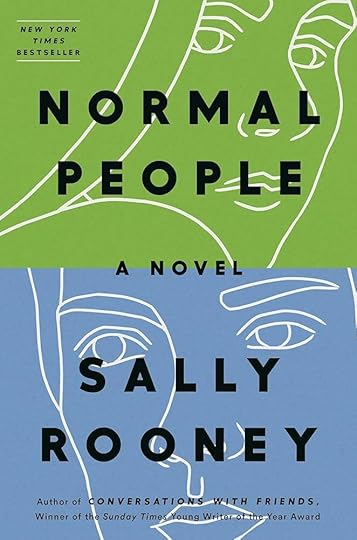

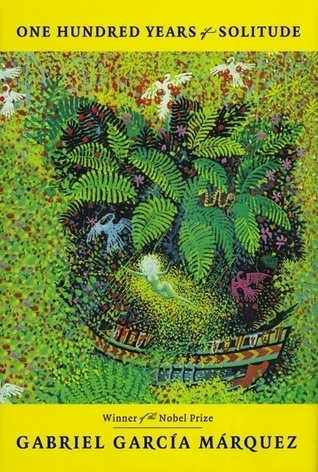
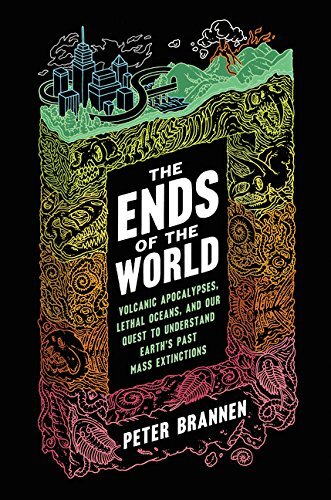
 We Deserve Monuments, Jas Hammonds
Normal People
, Sally Rooney (which I’ve already read)Senlin Ascends (Books of Babel #1), Josiah BancroftThe Ends of the World, Peter BrannenOne Hundred Years of Solitude, Gabriel Garcia Marquez (re-read from 20 years ago)Modern Poetry, Diane Seuss
We Deserve Monuments, Jas Hammonds
Normal People
, Sally Rooney (which I’ve already read)Senlin Ascends (Books of Babel #1), Josiah BancroftThe Ends of the World, Peter BrannenOne Hundred Years of Solitude, Gabriel Garcia Marquez (re-read from 20 years ago)Modern Poetry, Diane SeussARCs, poetry, and other random books I hope to get to real soon:






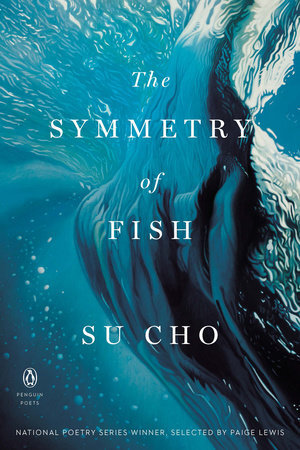
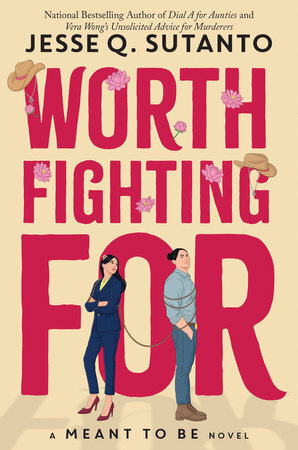

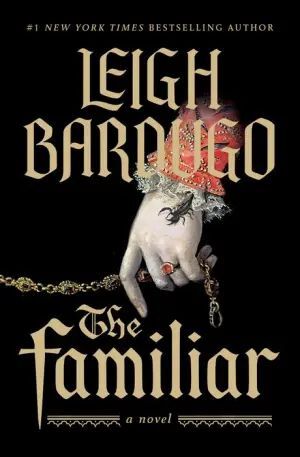


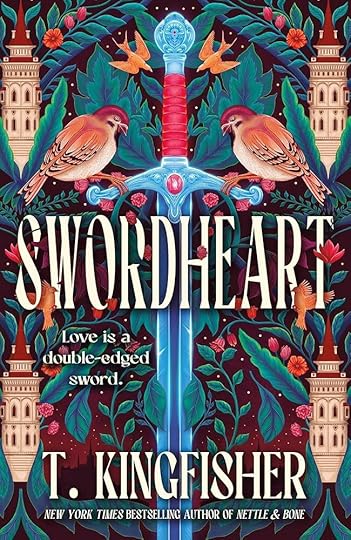

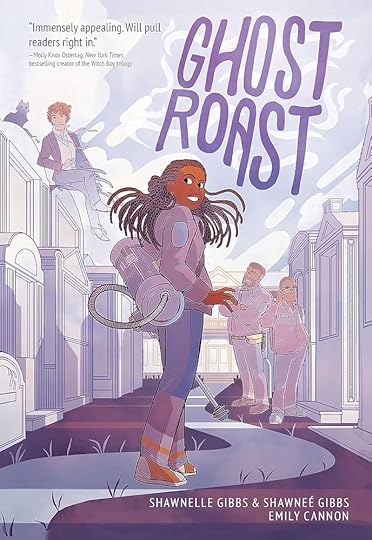
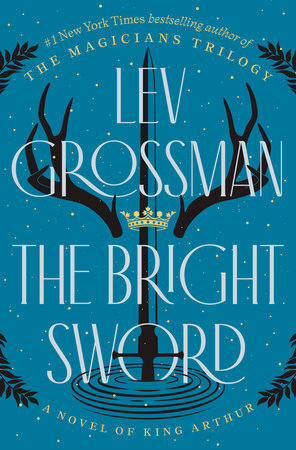
 I Got Abducted by Aliens and Now I’m Trapped in a Rom-Com, Kimberly LemmingWhat Pecan Light, Han VanderhartThe Geographer’s Map to Romance (Love’s Academic #2), India HoltonAnd Yet Held, T. De Los ReyesIf We Had a Lemon We’d Throw It and Call That the Sun, Christopher CitroA Family Matter, Claire LynchThe Symmetry of Fish, Su ChoWorth Fighting For, Jesse Q. SutantoThe Phoenix Pencil Company, Allison KingThe Familiar, Leigh BardugoWe Do Not Part, Han KangThe Fraud, Zadie SmithThe Emperor of Gladness, Ocean VuongGhost Roast, Shawnelle GibbsSwordheart (The World of the White Rat), T. KingfisherThe Bright Sword, Lev GrossmanThe Likeness (Dublin Murder Squad #2), Tana French
I Got Abducted by Aliens and Now I’m Trapped in a Rom-Com, Kimberly LemmingWhat Pecan Light, Han VanderhartThe Geographer’s Map to Romance (Love’s Academic #2), India HoltonAnd Yet Held, T. De Los ReyesIf We Had a Lemon We’d Throw It and Call That the Sun, Christopher CitroA Family Matter, Claire LynchThe Symmetry of Fish, Su ChoWorth Fighting For, Jesse Q. SutantoThe Phoenix Pencil Company, Allison KingThe Familiar, Leigh BardugoWe Do Not Part, Han KangThe Fraud, Zadie SmithThe Emperor of Gladness, Ocean VuongGhost Roast, Shawnelle GibbsSwordheart (The World of the White Rat), T. KingfisherThe Bright Sword, Lev GrossmanThe Likeness (Dublin Murder Squad #2), Tana French

March 2025. Nearly every book I read in March I would recommend. Some more emphatically than others.


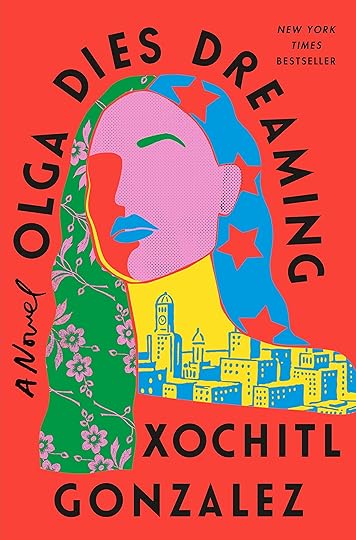
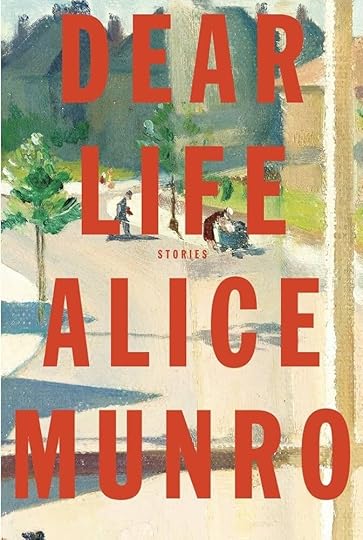
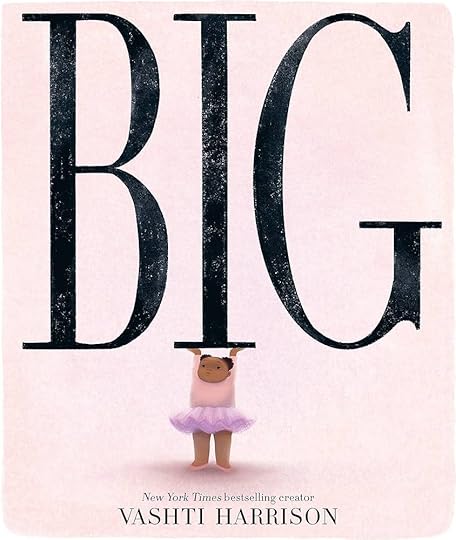
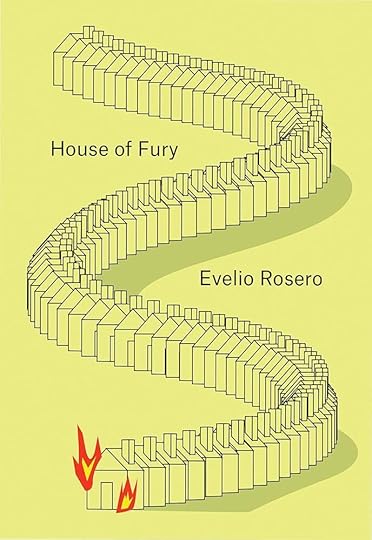

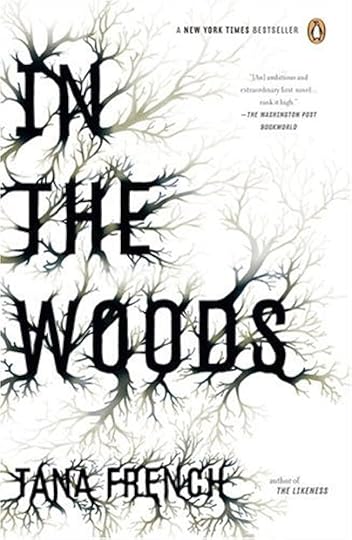 And Then There Were None
, Agatha ChristieA Study in Charlotte (Charlotte Holmes#1), Brittany CavaralloOlga Dies Dreaming, Xochitl GonzalezDear Life, Alice MunroBig, Vashti HarrisonHouse of Fury, Evilio Rosero (caveats of excessive violence and sexual assault)The First Sister (First Sister Trilogy #1), Linden A. LewisIn the Woods (Dublin Murder Squad #1), Tana French
And Then There Were None
, Agatha ChristieA Study in Charlotte (Charlotte Holmes#1), Brittany CavaralloOlga Dies Dreaming, Xochitl GonzalezDear Life, Alice MunroBig, Vashti HarrisonHouse of Fury, Evilio Rosero (caveats of excessive violence and sexual assault)The First Sister (First Sister Trilogy #1), Linden A. LewisIn the Woods (Dublin Murder Squad #1), Tana French
April 7, 2025
NaNoWriMo Is Shutting Down

I have addressed some of the drama surrounding NaNoWriMo in the past year to two years. But not really, because I have been a little confused about it while not knowing enough to hold some emotionally-charged opinion (which others seem willing to do). I have been a participant (and winner) of NaNoWriMo in the past, have used it to write hundreds of thousands of words. I have really enjoyed the graphs and accountability as much as the community (which I took part in almost exclusively locally). Last year there was no NaNo, and I was in a terrible moment of my schedule to take part, anyhow.
(You can find the articles I’ve written on NaNo over the years HERE.)
Now, they announce, they are shutting down. They could not recover from the scandal or whatever it was. They could not update their old ways of doing things to make things financially viable. And this is a bummer for the writing world and so many aspiring writers. My aunt retired like a month ago and was looking forward to her first NaNo in November, something she had wanted to do for decades. (They’ve been around 20 years and their community was approaching half a million at their peak.) So that is dumb.
Other sites have cropped up to replace NaNo, at least on a smaller scale. And NaNo signed off hoping that people would continue to put 50,000 words on the page in November. Their demise can’t stop people and they certainly don’t want it to.
Other options:
TrackBearPlotteratiShut Up & Write!Pathfinders Writing CollectiveFicFrenzymyWriteClubAutoCrit Novel Writing 90 ChallengeStory a DayNoQuA Round of Words in 80 DaysI will try some of these in November and letting you know what I think of them and where I land.
Also, if you have statistics or content on NaNoWriMo’s website that you want to keep, then you need to head there ASAP and gather it. Download it or take some screenshots or something. I went to the site and was overwhelmed by the sheer volume of graphs and history I will lose and just sighed and gave up. The words are still mine. The track record and graphics will go away.  But the point is you need to head on over there if you want to check on your stuff and maybe save some things.
But the point is you need to head on over there if you want to check on your stuff and maybe save some things.
End of PSA.
Movie Review: All of Us Strangers

In one of my book clubs, we watch a movie based on a book each year. Last year we watched All of Us Strangers. Because Taichi Yamada’s book of the same name was not on my radar, I did not read the book first. But I ended up watching the movie twice. (I thought I was supposed to watch it ahead of club, but the club was the viewing.) I also brought a Harry Potter-themed birthday cake because it was my birthday. See some OTHER post. This bit of lightheartedness was antithetical to the movie.
Andrew Scott (and Claire Foy) star in this very dysthymic and critically- and reviewer-acclaimed movie about a gay man who lives nearly alone in a new high-rise building when he finally meets one of his neighbors. Meanwhile, he discovers that his long-dead parents are still living in his old, family house and he’s able to visit them.
(Let’s just let you know that there are some full-on sex scenes in this movie.)
The hook is good, isn’t it? And the movie has a mysterious quality, where you are trying to figure out the reality of the set-up. What is going on? But it is mellow—really mellow—and is about being gay and coming out as much as it is about childhood trauma and death and loneliness. And success, I guess, too. A challenge to modern ideas of success. It is dark (low-light) and chill, slow lingering scenes full of sparse, meaningful dialogue.
It’s a good movie, but you have to be okay with whatever I just said and also ambiguous endings. And you have to be in the right mood to appreciate it (which I feel is harder and harder to come by–that mood in which one can absorb more difficult and awkward content–in the aftermath of the Pandemic and the current political reality). Yes, ambiguous ending. Purposefully. I actually disagreed with most people on the ending (which of course we discussed at book club) until we remembered one little thing. So it is one of those endings you can go over with your friends, change your mind about.
An art film that comes across like a student film.
Easy to sit around and discuss. More difficult to watch. But interesting and acclaimed.
March 25, 2025
ARC Review: Cute Foods Around the World

I received Cute Foods Around the World from Cupkin as an ARC, but it has been quite some time. I took it with the family on a road trip in the summer to check it out, but it has been quite some time since then, as well. Better late than never? Hopefully for the Creative Spark books illustrated by Becky Cas (and all the other Cupkin books).
(Upon very shallow research, I learned that Cupkin is a children’s travel cup brand, which makes sense. The sticker books, then, are a sort of accessory for travel with their cups. And if you want to sticker up your cup…)
I am too old for children’s’ sticker book and so are my kids (19 and 16 on this road trip). But we’re also not. Because if you want to do stickers in a sticker book to relax or be creative and you’re 99, then that’s just fine. You’re not hurting anyone. And there is something soothing about a sticker book like this. Pages on pages of cutesy, blank scenes with dozens of stickers on a sheet matched to each, you can move the stickers around later if you want. In that sense, this reminded me of Colorforms (which I would happily still do, as well). Honestly, sitting in the car as the road slid under concentrating on where I wanted to put the frog and his bowl of dumplings was actually very relaxing. I would recommend it. And we spent some time discussing the different countries and their food.
This series is a winner. It’s exactly the kind of thing I would have bought for my kids and will buy for my niece in a couple years. Cute. Ample stickers. Good quality. Different themes across the series. (I requested Foods Around the World because I’m me, but there is also Animal, Princess, All Around Town, Cars and Planes, Camping, Outer Space, Bugs, Dinosaurs, Llamas, Cats, Penguins, Fairies, Sports, Spooky Village, Holly Jolly Holiday, Axolotl, Mermaids, Museum, Snow Day, Safari, Pets, Farmers Market, and more. In the Cute series, there are Bunnies, Together with You, Pandas, Koalas, Going on a Trip, Foods Around Town, Winter Wonderland, and more.) Three of the books are illustrated by Becky Cas, an illustrator out of Switzerland who illustrated the one we got.

So, all the things I said above are true for kids, too. Most kids will enjoy a sticker book and it’ll be some screen-less quiet time, as well. Personally, I don’t trust kids in the back of the car with stickers (unless they have proven themselves trained in this area), but you do your kids. As I mentioned, there’s a book for just about any little kid and so many little kids would enjoy setting a mermaid scene or dinosaur tableau. And these books are spiral bound (so that they sit flat) and board book-y (without being too thick, they can be used without a table, like on a lap).

Get your Life of Cute Bunnies for Easter, and you’ll thank yourself. Either for the great gift you’ll be giving to a little one who will love it, or for the hour’s peace you carved out for yourself to make a zoo scene with adorable bunny stickers. You can get Cupkin books from their WEBSITE or Amazon.
March 21, 2025
Cookbook Review: Vegetarian Cooking for Everyone/The New Vegetarian Cooking for Everyone

There is a new version of Vegetarian Cooking for Everyone by Deborah Madison, The New Vegetarian Cooking for Everyone. It has an additional 200 recipes and was published in 2014. However, I got my very beat-up copy in 2001 (when it was shiny and new), so this is a review using the old version, but I am certain will hold up for both versions. I have seen the new one, thumbed through it. They are very, very similar.
Vegetarian Cooking for Everyone is hands-down one of my favorite and most-used cookbooks. It is also the book that taught me—fresh out of college and in marriage and newly vegetarian—how to cook. It opened my eyes to so much cuisine that I had never imagined during my Midwestern upbringing. I was ushered into the magic that happens in the kitchen, watching oil and egg fuse and fluff into Mayonnaise, hiding red lentils under a lid and removing it later to yellow Dal, slow-simmering alliums until they became the sweetest and deepest Caramelized Onions. I managed my first pot of beans, my first broth. I did not know how simple, homemade things could blow the pre-packaged foods of my childhood out of the water: Guacamole, Pesto, Oat Scones. We built a marriage around picnic baskets full of Vegetarian Classic sandwiches, cookouts arriving with Coleslaw with Buttermilk-Horseradish Dressing, and dinner tables laden with Eggplant Rollatine and Winter Vegetable Chowder. We took Carrot Soup with Onion Relish to a family with a new baby, impressed my in-laws with a Tomato and Red Pepper Tart, moved to the South and made my first batch of Fried Green Tomatoes, and whipped up Herb Focaccia for huge, family gatherings. Our little ones were raised on Glazed Carrots with Mustard and Honey, fried Firm Polenta, Buttermilk Pancakes and Multigrain Waffles. I encountered quinoa and asparagus, sometimes graduated to similar recipes in other cookbooks (Granola to honey-maple granola, Pizza Crust to grilled yogurt pizza crust). Sometimes I even missed a recipe because I didn’t yet have the capacity to understand what it might offer (Corn Pudding Souffle, Goat Cheese Flan, anyone?). Who else was going to show me what to do with tofu and tempeh, with Jerusalem artichoke and Delicata squash (especially in 2001)? Flipping through my copy now, I encounter so many notes, but also stickers, old lists, food stains, newer recipes scratched into the margins, and even dried leaves. Each one of these recipes is a memory that I can taste as well as feel.
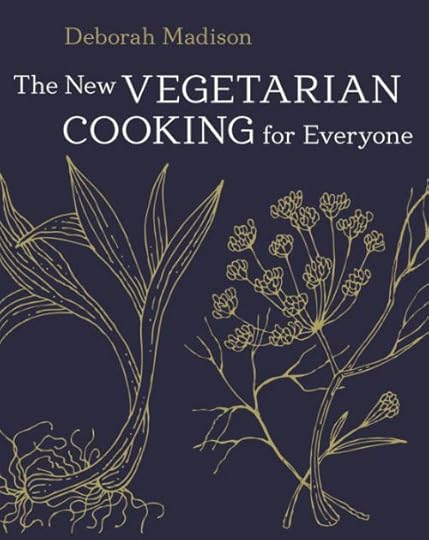
Some people like cookbooks because they like coffee table books, pretty things for evoking appetite and for admiring. Personally, I have some of those types of cookbooks, but I much prefer the ones chock full of actual recipes, nevermind the photos or stories. This is one of the latter. There are occasional sketches and a few ten-page inserts of photos, but mostly the pages contain a few recipes per page, no nonsense, variations abounding. And since the recipes can be trusted, this is great practicality in a 700-page brick.
We are no longer vegetarian. We were for something like eight years (during which we had two babies), but changed diets when we realized we could eat meat in a way (and sourced in a way) that continued to honor our principles. We still eat vegetarian dinners more than once a week. Habit. Cost. Health. And principles. Obviously, this is a vegetarian cookbook. There are also plenty of vegan recipes. And an entire section devoted to vegetables. (This is something you see more often now, but at the time it was fairly unique, celebrating actual vegetables.) I also much prefer cookbooks that don’t pretend veggies, legumes, and soy products are meat or substitute them in for “normal” recipes. Vegetarian Cooking almost never does that. The attitude is not lack or substitution, but plenty and celebration.
Vegetarian or not, there are a lot of basics in this book, thrown together with some more curated, composed dishes. Some of the recipes are easy and quick, while others take more time and effort, mostly time and patience, really. The recipes are written simply, but it takes practice and a few hours to home-make bread, for example. A pasta dish with a few ingredients, on the other hand? Goes together in minutes and anyone can do it.
Vegetarian Cooking is considered Deborah Madison’s magnus opus, but she has other cookbooks. I also have her Local Flavors, and for cooking straight from your farmer’s market, there isn’t a better book. She is an award-winning (four James Beards!) writer, chef, teacher and restaurant owner. Besides Vegetarian Cooking for Everyone (and The New Vegetarian Cooking for Everyone), her other cookbooks are:
Local FlavorsSeasonal Fruit DessertsVegetable LiteracyAn Onion in My PocketIn My KitchenVegetable SoupsVegetarian SuppersThis Can’t Be Tofu!The Greens CookbookThe Savory WayThe Vegetarian TableWhat We Eat When We Eat AloneSome of my very favorite recipes through the years of using this book:
Fried Green OlivesBaked OlivesBasil-Walnut DressingPeruvian Potatoes with Peanut Sauce and GarnishesGreek SaladCurry VinaigretteCream of Leek Soup with Fresh Herbs and Cheese CroutonsFideos—A Mexican Dry SoupBarley Soup with Caramelized Onions and Pecorino CheeseChickpea Soup with Condiments (Leblebi)All-Bean ChiliSpaghetti with Garlic, Parsley, and Bread CrumbsPenne with Eggplant and MozzarellaNoodles in Thai Curry SauceBarley RisottoCurried Quinoa with Peas and CashewsRice and Winter Squash GratinCream and Ginger SconesSandwich Focaccia with RosemaryObviously, I love this book and highly recommend it. It is not a coffee table book, but it is a staple for any kitchen. It’s also not a diet book; she’s not going to show you how to live as a vegetarian or give you theory about combining proteins. You don’t have to be vegetarian to appreciate or use the hundreds of recipes for salads, sides, breads, desserts, dressings, sauces, etc. But when you do have a vegetarian over for dinner (or your kid decides they’re vegetarian), it would be a great source for that, too. For real: every self-respecting kitchen library should have a copy of this book.
March 18, 2025
Book Review: The Vegetarian

I have been recommending The Vegetarian by Han Kang at the bookshop. The thing is, I recommend books sometimes that I didn’t really enjoy reading, because I understand that not every reader is me. If there is a connection there… I will recommend it. But the truth is that I have mixed feelings about The Vegetarian, anyway. Did I appreciate it? Yeeees? Was I engaged? Yes? Did I enjoy it? Well, that’s not really the word you’d use here. And the book is intense. There is body horror. There is sexual predation. There is mental illness. There is a distinctly Korean blending of the everyday (especially eating, drinking, sex, and the work place) with body horror, especially that involving human-nature transformation. I say this after reading three South Korean books this year and man, do they have a vibe.
Yeong-hye is having violent dreams of blood and death and her reaction is to stop eating meat. But her family doesn’t understand and her husband is embarrassed. Could one woman’s small act of autonomy cause her manicured and maintained life to fall apart? Could it drive everyone away (or draw the attention of the wrong people)? Does it mean that Yeong-Hye is going mad?
Han Kang won the Nobel Prize in Literature in 2024 for her contribution to letters. She is a Korean writer whose works are being translated into English and available in America more slowly than her popularity in Asia has grown. The Vegetarian was published in 2007 and translated and published in English in 2015. It then won the International Booker Prize in 2016. Since then, more and more of her works are being translated, including Human Acts (2014 and 2016), The White Book (2016 and 2017, finalist for the International Booker), Greek Lessons (2011 and 2023), and We Do Not Part (2021 and 2025). It looks like Your Cold Hands (2002) has not been translated yet? (There are a number of other awards and shortlists among these.) (If you are interested in translation, Korean translation, or specifically how it plays out with Kang’s literature, there is a New Yorker article HERE about that. As a casual but well-read reader, the translation impressed me.)
My understanding is that The Vegetarian was originally three separately-published short stories or novellas. They definitely go together and read as a novel, but the three parts each feel distinct, too. Kang gives us three perspectives, and none of them are the protagonist’s, Yeong-Hye’s. (There are some fever-dream-ish interjections in italics in the first section that actually are her voice, but overall the first section is the perspective of her husband, the second of her brother-in-law, and the third (thank goodness!) is her sister.) It approaches surrealism or maybe even magic realism. And we’re never one hundred percent sure how we’re meant to read Yeong-Hye. It could be the cultural differences and our lack of understanding the context, but it could also be the way Kang (and plenty of other authors) writes.
Because I am not sure if this is a book about mental illness (probably schizophrenia) or about being a woman in South Korea. It feels like you have to choose between those two points because they kind of oppose one another, but perhaps the mental illness and the metamorphosis are being used as a counterpoint, a metaphor, and both things are true at once. Speaking of metamorphoses, I have not read Kafka’s The Metamorphosis, but there was some discussion at book club about this being an inspiration. (Metamorphosis is more clearly a metaphor, I think.) Expressionism plus reality? Modern Americans aren’t really great at holding opposing truths together, at the same time.
There was also some discussion at book club about people becoming plants (which was also present in Kim Un-Su’s The Cabinet) as a way of dealing with Communist themes. Someone said that the book “confronts historical trauma.” Which is part of what, as an outsider looking in, I am missing. Not that I couldn’t do some research and try to understand Korean history and Korean literature better. I think it’s easier to see Yeong-Hye’s rebellion to the system (to Korean society) in which her womanhood is caught. Easier to see her renunciation of what is happening to her and what she is passively participating in (up to this point). And she’s no sudden hero. The book is about her learning, over time, how not to participate in a system of predation and violence, of bumbling into body autonomy. Subtly while also loudly (on the page). And with much book club debate. It’s about boundaries and voice. It’s about control and who has it.
And it’s also pretty easy to see this tale as one about mental illness and that quote, “A sane person in an insane society must appear insane” (which is in a Kurt Vonnegut book but has been attributed elsewhere, as well). Who in this book is insane? Or going insane? And what choice do they each have over becoming insane? Are the three sections simply three responses to mental illness? The reason I liked the third section best is that I can relate to the sister’s response to the mental illness. It was problematic and fraught, sure, but it was both more real and less disgusting. Are all three perspectives ways of doing Yeong-Hye violence either for her rebellion or her illness? It would be interesting to explore what dreams accomplish in this narrative. I think that could really enlighten us as readers. The dreams actually seem to be the key to the book’s meaning. Nature is another lens through which to view this book.
It’s a tough read. It’s violent and troubling and doesn’t shy away from various graphic scenes. Is it worth it? Is it a good book? Some of the words used by reviewers online: weird, bleak, dark, powerful, abrasive, disturbing, rich, terrifying, unhinged (I would disagree with this one—the book is very controlled, actually, but the characters might be unhinged), emotional, unsettling, elusive, sinister, beautiful, unconventional. There are some real lovers online as well as real haters. A lot of peeps who come into the bookshop are the kind who would appreciate literature like this, world horror with alternative structure and body autonomy. But it’s certainly not for everyone. I am glad I read it, even though it’s not the vibes I usually enjoy. The writing itself (and translation) is great. The story is troubling and, at times, shocking. You probably know if you are the type of person who will appreciate this award-winning book.
Note: I will be reading Kang’s newest novel, We Do Not Part. Soon.
Trigger warnings galore, including a horrifying scene with an animal.

“The very idea that there should be this other side to her, one where she selfishly did as she pleased, was astonishing” (p19).
“[bad dreams] shiver the long night into fragments like potsherds” (p139).
“As a daughter, as an older sister, as a wife and as a mother, as the owner of a shop, even as an underground passenger on the briefest of journeys, she had always done her best” (p143).
“Why, is it such a bad thing to die?” (p160).
“Now, with the benefit of hindsight, In-Hye could see that the role that she had adopted back then of the hard-working, self-sacrificing eldest daughter had been a sign not of maturity but of cowardice. It had been a survival tactic” (p161).
“To In-Hye, He-Joo’s words sounded like the deafening roar of a plane taking off” (p164).
“It’s your body, you can treat it however you please. The only area where you’re free to do just as you like. And even that doesn’t turn out how you wanted” (p179).

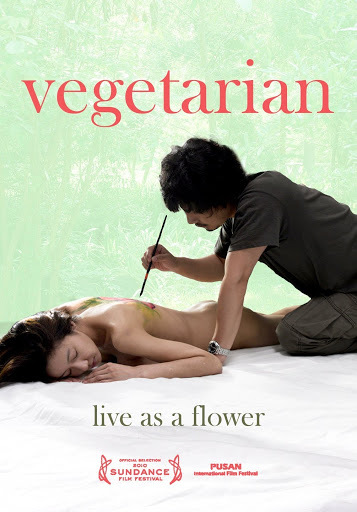
There’s a 2009 Korean film. Knock yourself out if you can find it. I can’t even imagine watching this after reading it. The book was intense enough for me.



